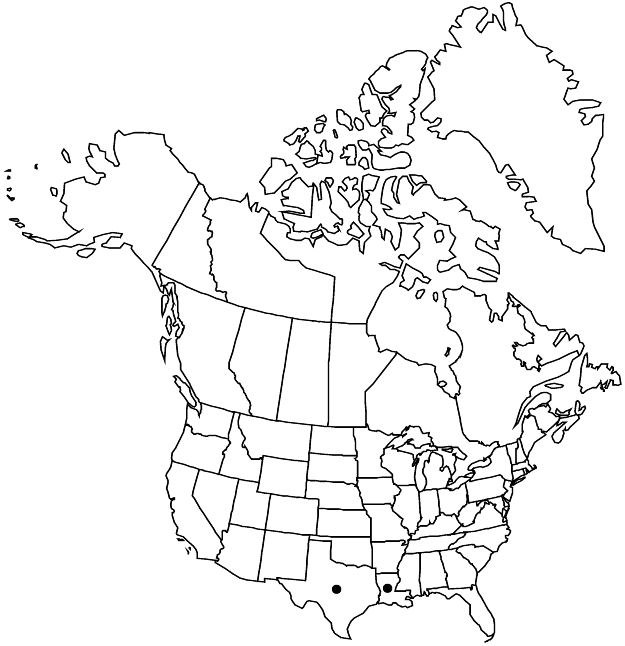Sida lindheimeri
Boston J. Nat. Hist. 5: 213. 1845.
Herbs or subshrubs, perennial, 1 m. Stems erect, minutely and sparsely stellate-hairy. Leaves: stipules free from petiole, 1-veined, linear, 4–8 mm, 1/2–1 times length of corresponding petiole; petiole 6–17 mm, to 1/4 length of blade, obscurely hairy; blade narrowly lanceolate or elliptic, 2.5–7 cm, 6–10 times longer than wide, base truncate, margins dentate to base, apex acute, surfaces obscurely hairy abaxially, glabrate adaxially. Inflorescences axillary solitary flowers. Pedicels slender, 2–4 (–6) cm, often equaling subtending leaf, much longer than calyx. Flowers: calyx ribbed, 7–10 mm, obscurely stellate-hairy, lobes triangular; petals yellow, 12–17 mm; staminal column sparsely hairy; style 8–10-branched. Schizocarps oblate, 8–9 mm diam., apically hairy; mericarps 8–10, laterally reticulate, apex spined, spines 1 mm. 2n = 28.
Phenology: Flowering spring–fall.
Habitat: Open, sandy shrublands and woodlands
Elevation: 10–300 m
Distribution

La., Tex., Mexico (Tamaulipas)
Discussion
Specimens from Florida identified as Sida lindheimeri are generally misidentified individuals of S. elliottii. Sida lindheimeri is widespread and occasionally common in south-central and southernmost Texas in approximately 40 counties, and it has been reported from Cameron and East Feliciana parishes in Louisiana.
Selected References
None.
Lower Taxa
"lengthofblade" is not declared as a valid unit of measurement for this property."/2-1timeslengthof" is not declared as a valid unit of measurement for this property.